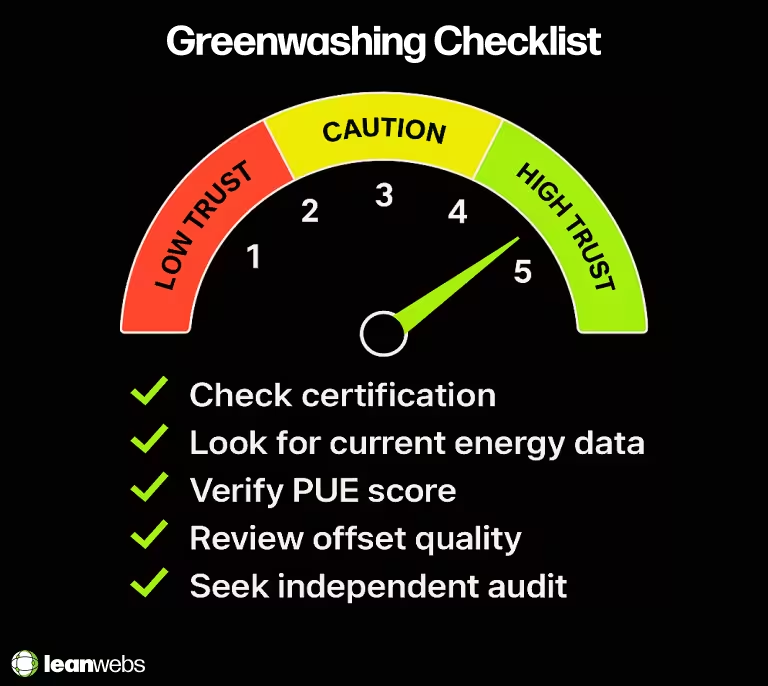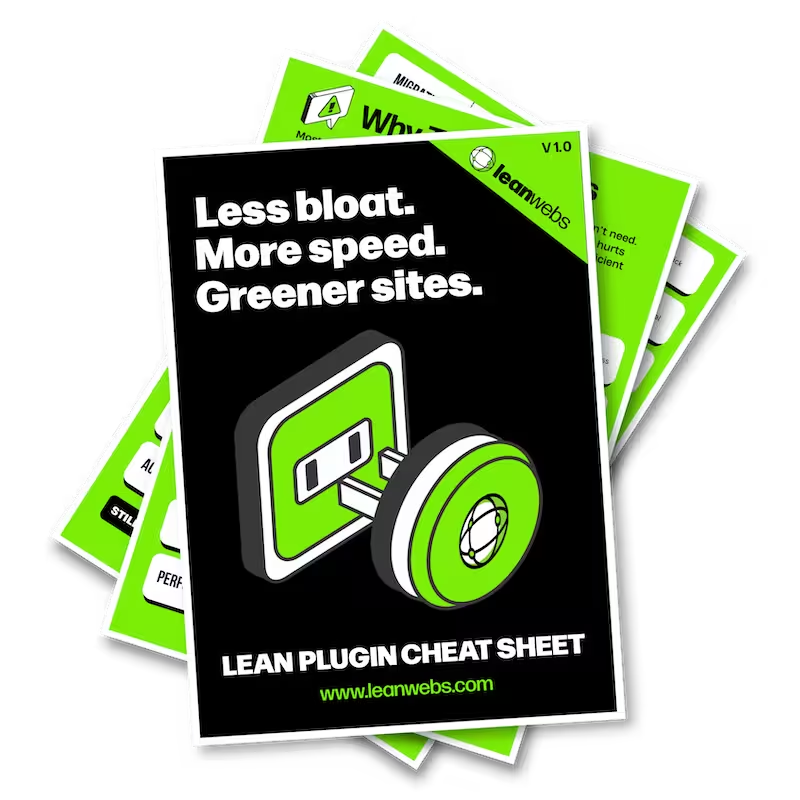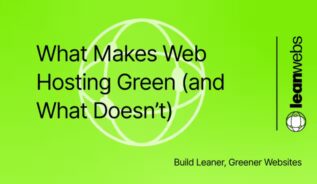Going green with your website shouldn’t be confusing, but myths and marketing spin often get in the way. Whether you’re worried about speed, cost, or trustworthiness, it’s easy to fall for outdated assumptions. This guide clears up the top misconceptions so you can choose hosting that’s both fast and genuinely sustainable.
Table of Contents
Myth 1: Green hosting is always slower
Reality: Modern green hosts can match, or even beat, mainstream providers on speed.
Why the myth exists:
- Early eco-hosting often relied on smaller, underpowered data centres.
- Some used outdated hardware with good intentions but poor performance.
Today’s difference:
- CDNs (Content Delivery Networks) cache your site globally, delivering from the nearest location.
- Optimised server setups reduce Largest Contentful Paint (LCP) times, often under 2 seconds.
- Renewable-powered facilities now invest in high-performance infrastructure.
Example: In LeanWebs’ own testing, a portfolio site on a green host loaded 0.3 seconds faster after switching, thanks to better caching and modern hardware.
Myth 2: It costs more to go green
Reality: Green hosting doesn’t have to break the bank.
What drives this myth:
- People assume renewable power = higher costs.
- Marketing from traditional hosts sometimes frames green services as “premium.”
The truth:
- Many green hosts price competitively with non-green equivalents.
- Efficiency gains can reduce the resources (and cost) you need over time.
- Certifications like ISO 14001 or Green-e signal genuine investment, not just marketing.
Pro tip: Compare total cost over a year, not just monthly rates, factoring in bundled services like SSL, backups, or CDN access. For a full cost-versus-benefit breakdown, see our Is Green Hosting Worth It? ROI & Impact Analysis.
Myth 3: Once you pick a green host, your site is sustainable
Reality: Hosting is just the start.
Even with a renewable-powered host, you can still have a heavy site with a large carbon footprint.
Common hidden emissions sources:
- Oversized, uncompressed images
- Autoplay video backgrounds
- Multiple tracking scripts from analytics or ads
Action steps:
- Audit your site for image compression and format (WebP or AVIF are lighter).
- Remove unused scripts and plugins.
- Use a lean, bloat-free theme.
Want to see the numbers? Try our How to Calculate Your Website’s Carbon Impact.
Myth 4: All green hosting claims are trustworthy
Reality: Some are real, some are marketing spin.
How to spot the difference:
- Greenwashing: Buzzwords without proof (“eco-friendly data centre”)
- Greenhushing: Understating sustainability efforts to avoid criticism
- Greenwishing: Future goals without current action (“100% renewable by 2030”)
Checklist for vetting claims:
- Look for current, public energy data.
- Check for third-party verification.
- Avoid hosts that only reference offsets without operational changes.
Example: A provider claiming “carbon neutral” but sourcing all power from fossil-fuel grids, then offsetting via low-quality credits, is greenwashing in action. For more on identifying genuine sustainability criteria, see What Makes Web Hosting Green (and What Doesn’t).

Myth 5: Offsetting alone equals “carbon neutral”
Reality: Offsets can help, but they’re not the same as reducing emissions.
The problem with offsets:
- Quality varies – some projects don’t deliver promised reductions.
- They can delay real operational changes.
Better approach:
- Cut emissions through efficiency first.
- Source renewable energy directly.
- Use high-quality, verified offsets for the remainder.
Myth 6: Renewable energy use guarantees zero impact
Reality: Even renewably powered hosting has a footprint.
Why:
- Server manufacturing produces emissions.
- Cooling systems consume energy and water.
- Global network infrastructure requires constant maintenance and upgrades.
A green host’s responsibility is to minimise lifecycle emissions, not just run on clean electricity.
Myth 7: Green hosts can’t handle high-traffic or enterprise sites
Reality: Many now scale effortlessly.
Features that make it possible:
- High-availability setups with load balancing
- Tier-1 data centre networks
- Enterprise-grade SLAs (99.9%+ uptime)
Case in point: A LeanWebs client serving 500k+ visitors/month runs on a renewable-powered host with zero downtime in the last 6 months.
Myth 8: Sustainability is just about the energy source
Reality: Energy is part of it, but far from the whole picture.
Other sustainability factors:
- Water usage in cooling systems
- Circular economy hardware reuse
- Smart data centre design to reduce waste
A truly green host looks at the entire operational footprint, not just the electricity bill.
Myth 9: Data centres in cooler climates are automatically “green”
Reality: Location helps, but isn’t enough.
- Cool climates can reduce mechanical cooling needs.
- But if the grid mix relies heavily on coal or gas, emissions stay high.
- Best case: Cool climate + renewable grid + efficient design.
Myth 10: Switching hosts is the only way to make your site greener
Reality: Optimisation can cut emissions without moving.
Quick wins:
- Compress images and serve modern formats.
- Minify CSS and JavaScript.
- Reduce HTTP requests by combining files.
- Remove unnecessary third-party scripts.
These steps improve user experience and environmental impact. If you decide switching is the better route, follow our How to Switch to a Green Host Without Downtime for a smooth, disruption-free migration.
The Quick Fix for a Slow, Heavy Site
We optimise your site for speed, efficiency and sustainability. No rebuild. No delays. Just better performance and a lighter footprint.
Final thoughts
Green hosting isn’t about labels, it’s about measurable outcomes. By separating fact from fiction, you can make hosting and design choices that deliver both performance and environmental benefits.
Next step: Measure your site’s footprint, act on one improvement today, and track your progress.



